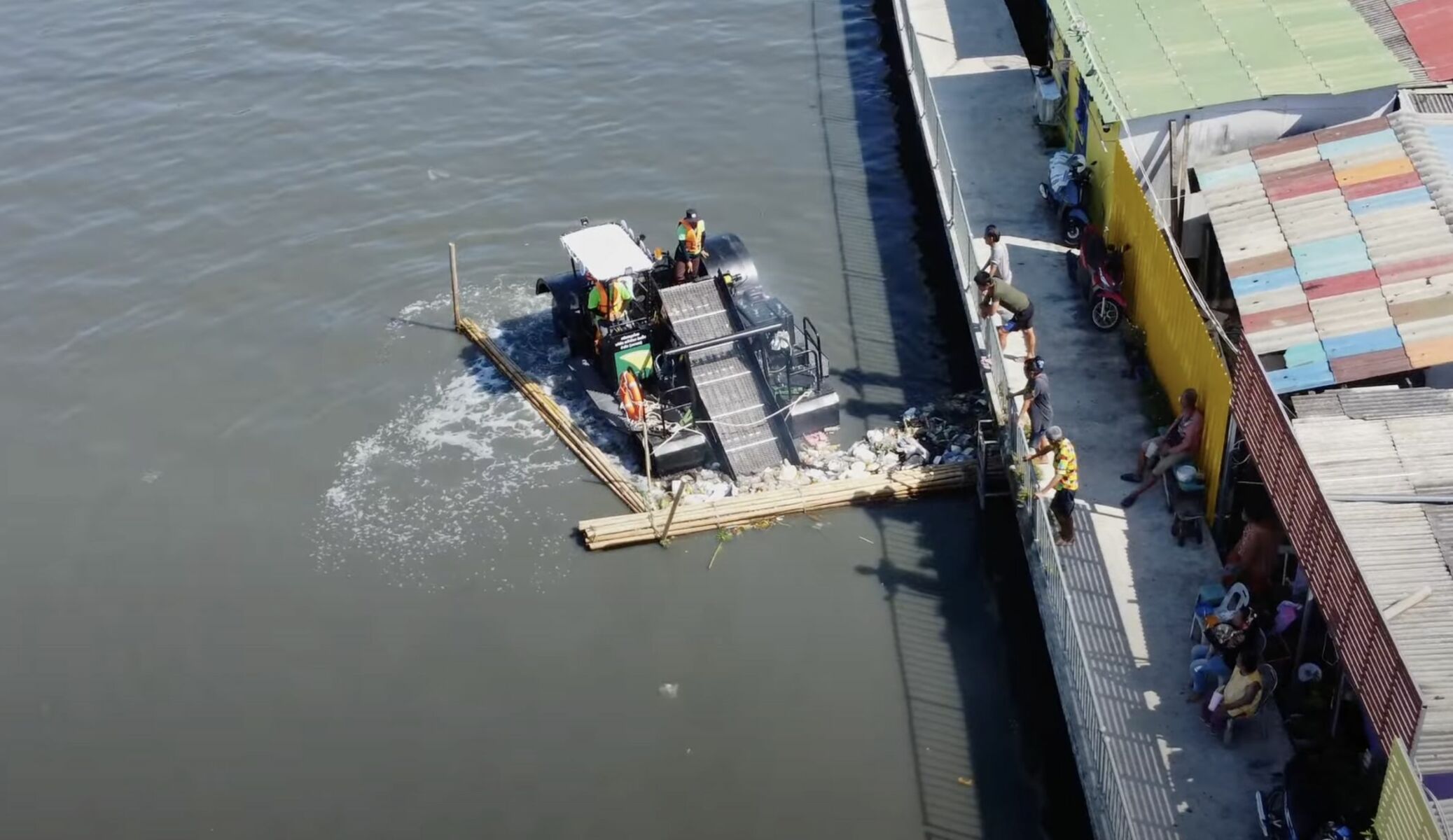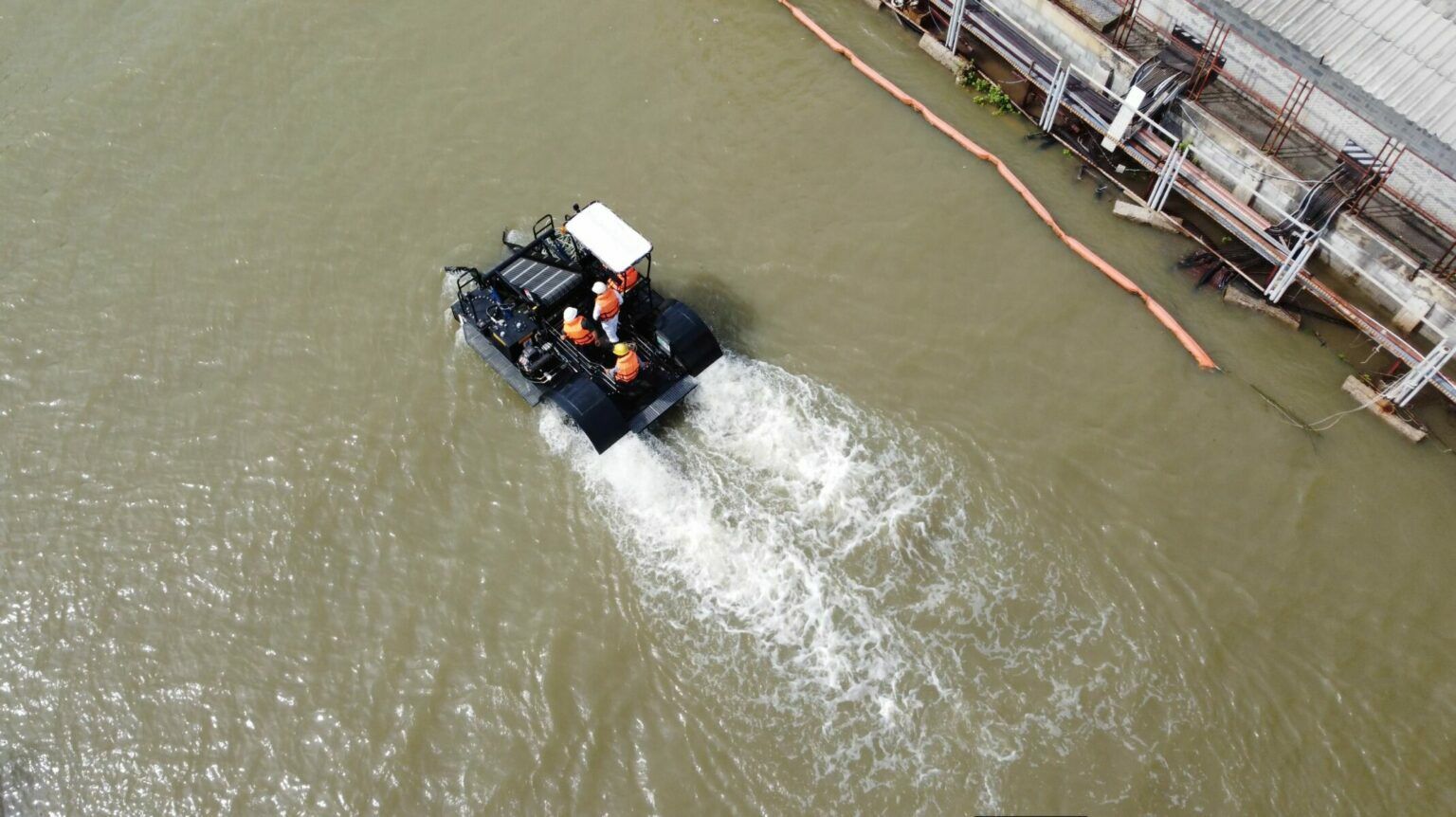Bangkok’s waterways get a cleaner, greener future with ‘Pitak Tara’ canal-cleaning boats

If you live in Bangkok, you’re probably all too familiar with its canals, or khlongs, quietly winding their way through the city. They’re part of Bangkok’s charm, a living reminder of its past as the ‘Venice of the East.’ But while these waterways have been the city’s lifelines, transporting goods and people for centuries, they’re facing a monumental challenge, pollution.
Precious Shipping Public Company Limited (PSL) saw this issue as an opportunity to make a contribution to the city as a part of its corporate social responsibility (CSR) program by funding Thailand’s first high-density polyethylene (HDPE) canal-cleaning boat, a sleek and efficient solution to tackle the waste problem plaguing Bangkok’s canals. The boat was built in collaboration with Asian Marine Services and EcoMarine.
The problem: A growing tide of pollution
Bangkok’s canals are a vital part of the city. They connect communities, support local economies, and feed into the Chao Phraya River. But decades of urban sprawl and unchecked waste have left these waterways in rough shape.
Rubbish, plastic bags, bottles, food containers — waste piles up in these canals, turning them into floating garbage heaps instead of the lifelines they used to be. Plus, since this waste flows into the Chao Phraya River and eventually out to sea, it contributes to ocean pollution. This disrupts ecosystems, threatens public health, and damages the city’s natural beauty.
Cleaning up these canals isn’t a job for the faint-hearted. Manual methods, while commendable, are slow and labour-intensive. It’s clear that Bangkok needs a fresh approach to tackle this mounting crisis.
The solution: A boat built for the future
Governor Chadchart Sittipunt draws a vivid analogy by looking at Bangkok like a human body. The Chao Phraya River is the arteries, and the canals are the capillaries. If the capillaries are blocked, the whole system suffers.
Currently, a garbage interceptor is in operation on the Chao Phraya River. While effective for the main artery, it is too large and unsuitable for the city’s narrow canals, where the real problem lies. These capillaries, the city’s smaller canals, are in dire need of appropriately sized cleaning boats that can navigate and efficiently clear them of waste.
PSL, together with Asian Marine Services and EcoMarine, has introduced a new canal-cleaning boat that happens to fit perfectly with this idea.
Designed, built, and launched in under a year, this canal-cleaning boat is small enough to squeeze through Bangkok’s narrow, winding canals. It’s made of HDPE, a lightweight and durable material that makes it easy to manoeuvre in tight spaces. Therefore, it can address the problem directly at their source.
For a company best known for transporting goods across the seas, tackling trash in Bangkok’s canals might seem like an unusual move. But for PSL, it’s personal because their operations are deeply connected to the sea.
“Well, it’s part of our partnership with the community. We’d like to make a positive contribution to the community. And this is one great way to do so,” says Gautam Khurana, PSL’s Director of Finance.
Chaipatr Srivisarvacha, Chairman of the Board of Directors, shares a similar sentiment. “For this type of project, yes, it is with the Bangkok Metropolis. We’ve been doing something on the CSR front every year for a long time.
But this is one thing that we wanted to do which fits our corporate goal in terms of cleaning up and green productivity, so that we help to clear the pollution and recycle. And we also have a role in designing this ship to use some of the material which would be more environmentally friendly,” he shares.
The first of many boats

The first test run of the canal-cleaning boat at ASIMAR Shipyard was a quiet triumph. It glided through the canal with ease, scooping up trash and proving that the idea works.
Captain Puriwat Waewwong, PSL’s fleet personal, who’s been testing it out, says it’s super easy to use. He explains, “I think it’s quite simple for the operations. Very easy to handle, not so complex. Anybody can work with these machines. It’s very good for Bangkok.”
Chief Engineer Trinnakorn Taenanthaphuvadol is also impressed. “To drive the boat, the separate part and starboard can turn in a very narrow canal. It’s very easy and collects garbage. [It’s] working very well,” he says.
And they’re not kidding. The canal-cleaning boat can turn in tight spaces and collect rubbish much faster than manual methods. Four times faster, actually. That means less strain on workers and cleaner canals in less time.
Gautam explains why this upgrade matters. “Right now, the garbage that is being collected, it’s being collected in a manual way. By automating it, we’re making this process a lot more efficient.”
Small boat, big impact
The main goal of this project is to clean up the environment, but it comes with plenty of other perks, too. Cleaner canals mean better public health, a more beautiful Bangkok, and stronger local ecosystems.
During the handover ceremony of the boat on November 19, Governor Chadchart shared his pride in the initiative, saying, “I think I’m glad that the private sector got involved, you know, because the city belongs to everyone, not only for us. And it’s good that we go together hand in hand and I think with everyone getting involved, I think we can solve any problems.”
This project is a reminder that big changes often start small: with one boat, one canal, and a group of people determined to make things better.
The future: Scaling up for a cleaner and greener Bangkok

So, what’s next? The team behind this canal-cleaning boat is already thinking about improvements. The prototype is great, but the next versions could be even better, more efficient, more effective, and maybe even cheaper to build.
“I realise that what we have today is not perfect, and I expect the second one should be better,” shares Gautam.
Governor Chadchart is also optimistic. He explained that scaling up is crucial, but starting with a prototype is the right first step. “Scaling is a key thing, but it’s good that we have a prototype, right? So we know what to improve. I think we have some criteria that we look at and improve on.
Once we improve it, we can scale. Once you have a group prototype, you can scale it very quickly. I think ASIMAR has the capacity to build more boats. We can bring more private sectors to get involved. So I think that’s a good start.”
It’s exciting to think about what’s ahead. With more boats like this one, Bangkok’s canals could become cleaner, greener, and more beautiful than they’ve been in decades.
For now, this little HDPE boat called Pitak Tara is a big step in the right direction. And who knows? In a few years, we might look back at this moment as the start of something truly transformative for Bangkok’s waterways and its people.
Sponsored
Latest Thailand News
Follow The Thaiger on Google News:


























